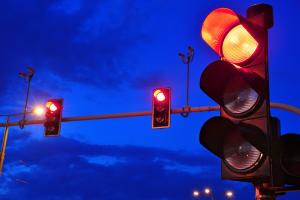Louisiana Laws Governing Traffic Control Device Failures
Traffic control device failures introduce complex legal challenges, especially when determining liability for resulting accidents.”
NEW ORLEANS, LA, UNITED STATES, January 9, 2025 /EINPresswire.com/ -- Traffic control devices such as stoplights, traffic signs, and road markings are essential for maintaining order and safety on Louisiana’s roads. However, when these devices fail or are improperly maintained, the risk of accidents increases significantly. — Stephen M. Morrow
Understanding Louisiana’s laws and legal responsibilities regarding traffic control device failures is crucial for drivers, municipalities, and businesses.
Stephen M. Morrow, a lawyer at Morrow Law Firm in Opelousas, Louisiana, explains, “Traffic control device failures introduce complex legal challenges, especially when determining liability for resulting accidents. Knowing the applicable laws is key to resolving these cases effectively.”
Importance of Traffic Control Devices
Traffic control devices serve several critical functions, including regulating traffic flow, guiding drivers, and ensuring the safety of all road users. Their proper functioning depends on maintenance by municipalities, adherence to design standards, and compliance by drivers. Failures in any of these areas can disrupt traffic patterns and lead to collisions, injuries, and property damage.
Examples of traffic control device failures include:
Malfunctioning or inoperative traffic lights
Missing, obscured, or improperly placed traffic signs
Faded or incorrect road markings
Temporary construction signage that is improperly displayed or removed
Legal Responsibilities for Traffic Control Device Failures
In Louisiana, responsibility for traffic control device failures is generally shared among several parties, including local or state governments, contractors, and in some cases, private entities. Determining liability requires an understanding of the specific circumstances and the roles played by each party.
Government Responsibility
Local municipalities and the Louisiana Department of Transportation and Development (DOTD) are typically responsible for the installation, maintenance, and repair of traffic control devices on public roads. This includes ensuring that devices meet federal and state design standards, remain operational, and are promptly repaired when issues arise.
When a traffic control device failure is linked to government negligence—such as failure to repair a known defect or improper placement of a sign—liability may fall on the responsible government agency. However, claims against government entities are subject to strict procedural rules, including notice requirements and damage caps under Louisiana’s sovereign immunity laws.
Contractor and Third-Party Liability
In cases where contractors or third-party vendors are involved in the installation or maintenance of traffic control devices, they may be held liable if negligence or errors contributed to the failure. For instance, a contractor who installs a stop sign incorrectly or fails to secure temporary construction signage may share responsibility for resulting accidents.
Driver Responsibility
Drivers are also expected to exercise caution and adapt their behavior when traffic control devices are not functioning correctly. For example, Louisiana law requires drivers to treat an inoperative traffic signal as a four-way stop. Failure to comply with such requirements may result in shared liability if an accident occurs.
Relevant Louisiana Laws and Regulations
Louisiana’s traffic laws and regulations address both the responsibilities of authorities maintaining traffic control devices and the behavior of drivers in situations where these devices fail.
Louisiana Revised Statutes (LRS) Title 32
LRS Title 32 governs traffic regulations, including provisions related to traffic control devices. Key sections include:
LRS 32:235: Outlines requirements for the placement and maintenance of traffic control devices in accordance with the Manual on Uniform Traffic Control Devices (MUTCD), a federal standard adopted by Louisiana.
LRS 32:234: Addresses the legal status of signals and signs, stipulating that their absence or malfunction does not absolve drivers from exercising reasonable care.
LRS 32:221: Requires drivers to stop at intersections with inoperative traffic signals and proceed only when it is safe to do so.
Comparative Fault in Louisiana
Louisiana follows a comparative fault system, which allows liability to be apportioned among multiple parties based on their respective contributions to an accident. In cases involving traffic control device failures, this may mean that responsibility is divided between the government entity, contractor, and drivers involved.
Steps to Take After an Accident Involving Traffic Control Device Failures
For those involved in accidents caused by malfunctioning or missing traffic control devices, certain steps are critical for preserving evidence and pursuing compensation.
1. Document the Scene
Photographs or videos of the malfunctioning or missing device, along with the accident scene, are vital. This evidence helps establish the conditions at the time of the accident and may be used to demonstrate negligence or fault.
2. Report the Incident
Accidents involving traffic control device failures should be reported to law enforcement and, when applicable, the local municipality or DOTD. A police report provides an official record of the incident and any observed issues with the device.
3. Identify Witnesses
Witness statements can provide valuable corroboration of the malfunction or failure, as well as the actions of the involved parties.
4. Seek Legal Guidance
Navigating the claims process, particularly when government entities are involved, requires an understanding of procedural requirements, such as filing deadlines and notice provisions.
Liability Challenges in Traffic Control Device Cases
Determining liability in cases involving traffic control device failures often involves complex investigations. Key considerations include:
Maintenance Records: Evidence of whether the responsible party performed regular inspections or addressed known defects.
Compliance with Standards: Whether the traffic control device met MUTCD and Louisiana-specific standards.
Driver Conduct: Whether drivers adhered to traffic laws and exercised reasonable caution given the circumstances.
Accidents caused by temporary construction signage failures may involve additional considerations, such as the adequacy of warnings and compliance with work zone safety regulations.
Conclusion
Traffic control device failures create significant safety risks and legal challenges on Louisiana roads. Understanding the laws governing these failures, as well as the responsibilities of municipalities, contractors, and drivers, is essential for resolving disputes and ensuring accountability. By addressing these issues comprehensively, affected parties can work toward safer roads and fair outcomes in the aftermath of accidents.
Morgan Thomas
Rhino Digital, LLC
+1 504-875-5036
email us here
Visit us on social media:
Facebook
Legal Disclaimer:
EIN Presswire provides this news content "as is" without warranty of any kind. We do not accept any responsibility or liability for the accuracy, content, images, videos, licenses, completeness, legality, or reliability of the information contained in this article. If you have any complaints or copyright issues related to this article, kindly contact the author above.


